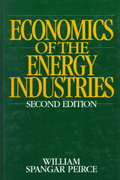Question
- I need to replay/ Respond for the following discussion below. - 200-300 words - Harvard System Reference - Support the replay with a References
- I need to replay/ Respond for the following discussion below.
- 200-300 words
- Harvard System Reference
- Support the replay with a References from your own and examples and experiences. ( 3 References)
- References to be within the UK
The discussion:
Good afternoon everyone,
Max Weber's Theoretical Model is a bureaucratic organisational design based on rational-legal principles and well structured, similar to that of a military organisational structure (Clegg et al, 2022).
The positive aspects of this model are the expectations of employees are well established and communicated throughout the organisation. Employees' rolesand responsibilities are thoroughly documented and communicated to avoid confusion. Individualsknow their authority and influence with clear boundaries. Max Weber's Theoretical model reduces nepotism and bias by making employees aware of their career progression possibilities, which promotes fairness in promotions and salary increments (Nickerson, 2023).
The negative aspects of this model impacts individuals' approach to challenges and task completion because of restrictions by the organisation's structure and their roles, influence, and power and must complete tasks as set with little mediation of processes or overall tasks as the rules are enforced and governed apply to all individuals within the organisation (Serpa & Ferreira, 2019).
Technological advancements have enabled organisations to sustain and implement more linear organisational structures, streamlining direct communication and information with all stakeholders internally and externally within an organisation. With the use of technology, organisations are more empowered to automate processes in support of operations and communicating with clients (Brynjolfsson & McAfee, 2014).
The existing organisational structure that my current employer utilises is the M-form organisation (Clegg et al, 2022). For the small number of staff within the organisation, it provides managers with the opportunity to be innovative and be agile in their approach to make immediate decisions; currently, whilst operating in the facilities management field, this is appropriate due to the challenges that occur, such as water leakages and power outages, rather than wait for approval; it is in the best interest of the organisation and client for swift action which can be argued that this type of organisation most certainly does offer a competitive edge in comparison to other organisations after analysis of the local market in which we currently operate within.
References
Brynjolfsson, E., & McAfee, A. (2014).The second machine age: Work, progress, and prosperity in a time of brilliant technologies.W W Norton & Co. Clegg SC, Pitsis TP, Mount MM. (2022) Managing and Organizations. (6th ed). London: Sage Publications Ltd. Available from: https://essexonline.vitalsource.com/reader/books/9781529776102/epubcfi/6/2[%3Bvnd.vst.idref%3Dcover]!/4/2[cover-image]/2%4039:0 [Accessed 07 August 2023]
Serpa, S, Ferreira, C.M. (2019) The Concept of Bureaucracy by Max Weber. The Concept of Bureaucracy by Max Weber 7 (2): 12-18. DOI: 10.11114/ijsss.v7i2.3979
Nickerson, C. (2023) Bureaucratic Management Theory Of Max Weber. Available from: https://simplysociology.com/bureaucratic-theory-weber.html#Advantages-and-Disadvantages-of-Bureaucracy [Accessed 07 August 2023]

Step by Step Solution
There are 3 Steps involved in it
Step: 1

Get Instant Access to Expert-Tailored Solutions
See step-by-step solutions with expert insights and AI powered tools for academic success
Step: 2

Step: 3

Ace Your Homework with AI
Get the answers you need in no time with our AI-driven, step-by-step assistance
Get Started


